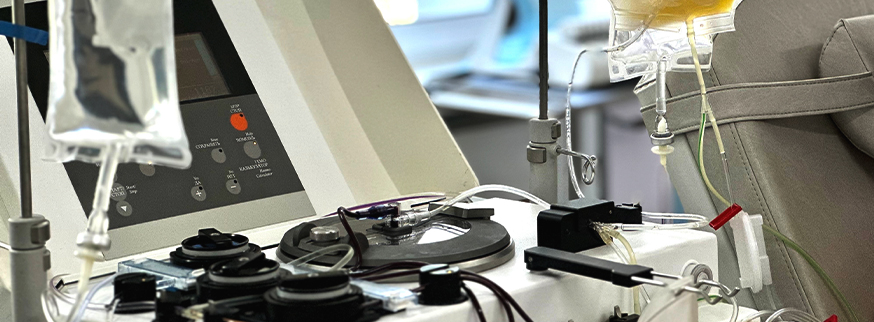
ADSCC’s Multiple Sclerosis Program is to evaluate the safety and efficacy of extracorporal photopheresis (ECP) in the treatment of Multiple Sclerosis. Extracorporal Photopheresis (ECP) is a treatment method used primarily for immune disorders. The process involves extracting a patient’s white blood cells, treating them with a chemical and light exposure, and reintroducing them into the body to regulate the immune response. ECP has been used to treat conditions such as cutaneous T cell lymphoma, graft-versus-host disease, and organ transplant rejection.
ADSCC is directing a rigorous, randomized control study, adopting an open-label design, to investigate the safety and performance of ECP as a potential treatment for Multiple Sclerosis (MS). This study possesses the endorsement of both the ADSCC Ethics Committee and the Department of Health – Abu Dhabi, demonstrating strong institutional support.
In addition, ADSCC performed the region’s first bone marrow transplant on a patient with Multiple Sclerosis, an internationally accredited treatment for MS.
Hematopoietic Stem Cell Transplantation (HSCT), a promising potential treatment for Multiple Sclerosis (MS), holds the capacity to ‘reset’ the immune system, curbing its errant attacks on the host’s nervous system.
The treatment initiates with the collection of hematopoietic or blood stem cells, typically harvested from the patient’s peripheral blood. Next, high-dose chemotherapy is administered to wipe out the patient’s errant immune system, effectively creating a clean slate. Afterward, the previously collected stem cells are infused back into the patient. They migrate to the bone marrow, laying the foundation for a new, hopefully more controlled, immune system.
The advantage of HSCT lies in its ability to stem the progression of MS, as evidenced by a significant reduction in the formation of new lesions along with substantial stabilization or amelioration of disability.
This treatment is typically considered for patients with aggressive disease forms who have not responded to frontline treatments. It’s seen as a quantum leap forward, offering the potential to halt the disease’s progression and improve the quality of life for MS patients.